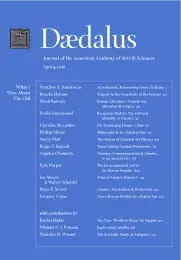Classics: Curriculum & Profession
The challenges currently facing classicists are not so different from those our profession has faced for the last one hundred and fifty years, and with each challenge, a discipline sometimes imagined by outsiders to be slow to embrace the new has shown itself naturally disposed to experimentation. The discipline’s agility derives from the unique degree of variegation in the modes of thinking required to thrive in it: from interpretive, to quantitative, to those relying on knowledge of culture and context. As the value of education is increasingly judged in terms of workforce development, we stand our best chance to thrive by sticking to our strengths, and anchoring our curricular goals and messages to the value of the liberal arts as a whole, as well as the intellectual dexterity that it fosters.
The shape of undergraduate training in the classics has changed dramatically. Up through the 1970s, it would be fair to say that our departments modeled curricula with the goal of producing the next Wilamowitz. We have since instituted programs with a wider view of desirable outcomes, and most of us have even allowed that some students could earn degrees in our field without any knowledge of Greek or Latin. That is a profound shift, but it is not the only dramatic change of its kind; in fact, it’s not the half of it. A snapshot from one hundred years ago shows how far down this path we have come. In the May 1912 issue of The Classical Journal, Ellsworth D. Wright of Lawrence College was taken aback by the results of his survey of 155 of the most reputable and representative American universities and colleges (public and private), with regard to the study of classical languages.1 (He excluded technical schools and colleges for women “for obvious reasons.”) The requirement for ancient languages across the country had shrunk to an average of only five years. It is eye-opening that this would appear to be a regression. But it is downright stunning that Wright was surveying the language requirements not just for those specializing in classics, but for any Bachelor of Arts (B.A.) degree from these institutions. . . .
